Knowing Where to Stand
“A good photograph is knowing where to stand.
”
Sitting around the fire, swapping stories. What’s better than that, on a warm August night?
If you’re Pete Muller, though, sometimes you feel the tug to step away from the fire. Pete’s a photographer, so to capture a moment like the one above, he needs to find a vantage point that lets him share it with us, his imagined audience.
In other words, he has to think like a writer.
From his perch above the scene, Pete can’t feel the heat anymore. He knows we can’t either, so he’s banking on the firelight to remind us how it feels sitting so close to a fire that your face starts to glow.
From up here, Pete can’t hear what’s said below. He’s counting on the image to trigger a riddle in our minds. Who are these people and what are they doing? Instead of being told a story, we’re invited to invent one of our own.
In fact, go ahead, writers: give it a try if you like. Who are these people and what are they doing?
Whatever you see in this picture, you don’t see Pete. He’s not in the foreground, holding a selfie stick. And he didn’t set the timer and run to an empty seat before the click. For this shot, anyway, he chose not to appear.
Writers make a similar choice whenever we put words on a page. But it’s not a simple roll call: “here” or “not here.” We appear in our work by degree, along a spectrum.
At one end, you could say we have the journal writer: This is my voice speaking my thoughts about my experience as I tell my story.
Call that “Fully Present.”
At the other end of the spectrum – call it “Fully Absent” -- we have the ghostwriter: someone trying to channel someone else’s voice speaking their thoughts about their experience as they tell their story.
You probably have a sense of where your work tends to fall on the Absent-Present continuum. As a playwright, I mostly camp out next to the ghostwriters, on the Absent end. Like Pete, I’m happiest away from the fire, trying to imagine who those guys are and what they’re doing.
In the middle, I see a figure silhouetted by the fire:
I think, Holy Man. Possibly Cult Leader. Possibly Stranger from Another Dimension.
Up the middle, I notice a gulf that splits the circle in two:
Perhaps the Senior Faculty (left) are having an Awkward Mixer with the Junior Faculty (right). Or the Middle Managers (right) are trying to persuade Upper Management (left) that This No-Cell-Phone Rule is RUINING the Company Retreat!
And that lone figure, standing far left:
Is he the Time-Travelling Hero, Dreaming of A Do-Over? Or Just Another Guy, worried he’s about to get Voted Off the Island?
I’m not a character in those scenarios, but as you might guess, my fingerprints are all over them. I love oratory and wonder what separates a cult leader from a visionary. I teach college students and worry every time I walk into class and they’re silently scrolling on their devices. I’d love a second chance at growing up and I still feel like the odd man out at parties.
Of course it’s good to practice moving up and down the Absent-Present Spectrum. But whether I’m physically in the scene or not is beside the point. What’s key is knowing where to stand in relation to your audience. For me, it helps to think like an emcee. I’m not the show, the show is. My job is orienting the audience to maximize their experience.
If that’s good enough for Ansel, and good enough for Pete, I guess it’s good enough for me (far right, striped sleeves, scratching his head).
Dana Yeaton will be the guest writer at our next WOW First Sunday event on April 3rd from 2:00 PM to 4:00 PM EDT. He is a playwright, lyricist, and director who teaches dramatic writing and oratory at Middlebury College.
You can either register on Eventbrite to reserve your free ticket or join us via ZOOM.
This August, Dana will co-lead the “The Lighthouse Sessions,” WOW’s second annual men’s retreat off the coast of Maine.






